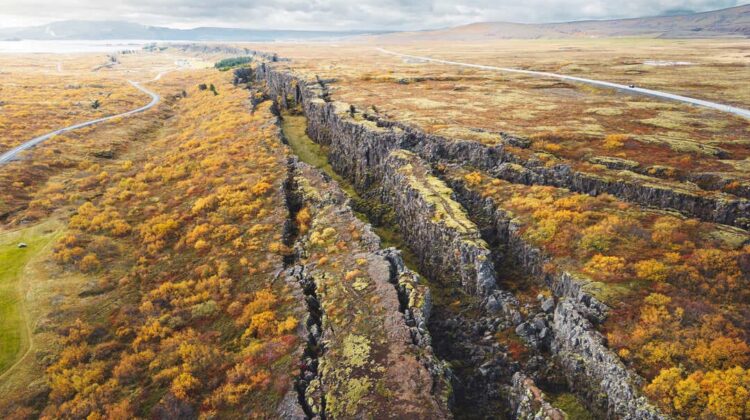
Epic Earth Chronicles: The Dynamic Forces Sculpting Our World
The Earth, as we perceive it today, owes its astonishing and ever-evolving terrain to the unceasing ballet of tectonic dynamics that sculpt its visage. These colossal mechanisms, orchestrated by the planet’s inner furnace and gravitational orchestration, serve as the bedrock of geological study. From soaring alpine chains to abyssal oceanic chasms, each geological marvel narrates an epic tale of tectonic interaction spanning aeons. This discourse unravels the labyrinthine mechanics of plate tectonics and their profound influence on our planet’s existence.
The Core Principles of Plate Tectonics
The framework of plate tectonics elucidates the ceaseless migration of the Earth’s lithosphere, which comprises segmented plates adrift atop the pliable asthenosphere. These lithospheric shards engage in a perpetual interplay at their peripheries, instigating a plethora of geological phenomena.
Composition of Earth’s Stratigraphy
The Earth’s structure is an intricate mosaic of layers:
- Crust: This wafer-thin, outermost layer shelters life. It bifurcates into continental and oceanic domains.
- Mantle: Beneath the crust lies this semi-viscous expanse, where convective flux propels tectonic dynamism.
- Core: The planet’s innermost sanctum, divided into a solid core enveloped by a molten outer core, generates Earth’s geomagnetic shield.
The lithosphere, a composite of the crust and the upper mantle, fractures into tectonic plates, which meander on the ductile underlayer, the asthenosphere.
Plate Boundary Interactions and Their Phenomena
The junctures where these plates converge, diverge, or shear past one another are the crucibles of tectonic activity, categorised into three principal boundary types:
1. Convergent Boundaries
Here, plates gravitate towards each other, with their interaction dictated by the type of crustal material:
- Oceanic-Continental Collision: The denser oceanic plate succumbs to subduction beneath the buoyant continental crust, birthing volcanic arcs like the Andes.
- Oceanic-Oceanic Collision: A duel between two oceanic plates results in one plunging beneath the other, forming island chains such as Japan.
- Continental-Continental Collision: A titanic collision between continental plates forges monumental mountain ranges like the Himalayas.
2. Divergent Boundaries
These regions witness plates parting ways, allowing magma to ascend and solidify, birthing fresh crust. This phenomenon primarily unfolds along mid-ocean ridges, such as the Mid-Atlantic Ridge, or on terra firma, as exemplified by the East African Rift.
3. Transform Boundaries
Transform boundaries are the sites of lateral plate displacement. These horizontal manoeuvres frequently unleash seismic disruptions, with the San Andreas Fault serving as a prime exemplar.
Tectonic Forces as Landscape Architects
Mountain Genesis
Mountains stand as majestic testaments to tectonic vigour, emerging predominantly at convergent boundaries. Over geological epochs, erosional forces chisel these behemoths, crafting valleys and intricate topographies.
Volcanic Marvels
Volcanic activity is intricately tethered to tectonics. Subduction zones incite magma genesis as descending plates melt, culminating in volcanic edifices. Similarly, volcanic outpourings at divergent boundaries birth nascent crust. Hotspots, such as Hawaii, arise due to mantle plumes independent of plate boundaries.
Seismic Activity
The grinding interplay at transform boundaries and subduction zones manifests as earthquakes, releasing pent-up stress in abrupt jolts. Advancements in seismology offer invaluable insights into these occurrences, bolstering disaster mitigation efforts.
Oceanic Realms and Tectonic Dynamics
The oceanic expanse is a theatre of ceaseless tectonic metamorphosis:
- Seafloor Spreading: Magma ascends at mid-ocean ridges, solidifies, and disperses older crust outward, propelling plate motion.
- Trench Formation: Subduction crafts profound oceanic trenches like the Mariana Trench, Earth’s most profound abyss.
- Hydrothermal Vents: These submarine springs, nestled along ridges, harbour ecosystems thriving on chemosynthesis rather than sunlight.
Tectonics’ Subtle Influence on Climate and Biodiversity
Carbon Cycle Modulation
Volcanism emits carbon dioxide, whilst subduction entombs carbon in lithic deposits, thus modulating atmospheric CO₂ and influencing global climate.
Ocean Currents and Climatic Patterns
Continental drift reshapes ocean basins, redirecting currents and altering climatic rhythms.
Evolutionary Catalysts
The drifting of landmasses isolates ecosystems, fostering unique evolutionary niches and biodiversity explosions.
Tectonics and Natural Perils
Tsunamis
Subaqueous quakes or eruptions displace vast water volumes, triggering tsunamis that radiate destruction across shorelines.
Volcanic Eruptions
Volcanic events unleash lava, pyroclastic torrents, and ash clouds, affecting local and global systems, including aviation and climate.
Modern Tools Decoding Tectonics
Technological strides illuminate the clandestine dance of tectonic plates:
- Seismological Studies: Analysing seismic vibrations unveils insights into plate dynamics and Earth’s inner anatomy.
- GPS and Satellite Monitoring: These innovations capture plate motions with precision.
- Deep-Sea Exploration: Submersibles and robotic explorers delve into tectonic wonders beneath the waves.
Conclusion
The ceaseless motion of tectonic plates is the maestro orchestrating Earth’s perpetual transformation. From majestic peaks to oceanic abysses, these processes shape our planet’s identity and fortify its resilience. Grasping the profundities of plate tectonics not only satiates human curiosity but also empowers us to confront natural hazards and environmental upheavals with sagacity.
Author: Levi Burrell
Science divulgator. He writes for numerous popular science magazines. Collaborates with the Deeping in the area of science dissemination
